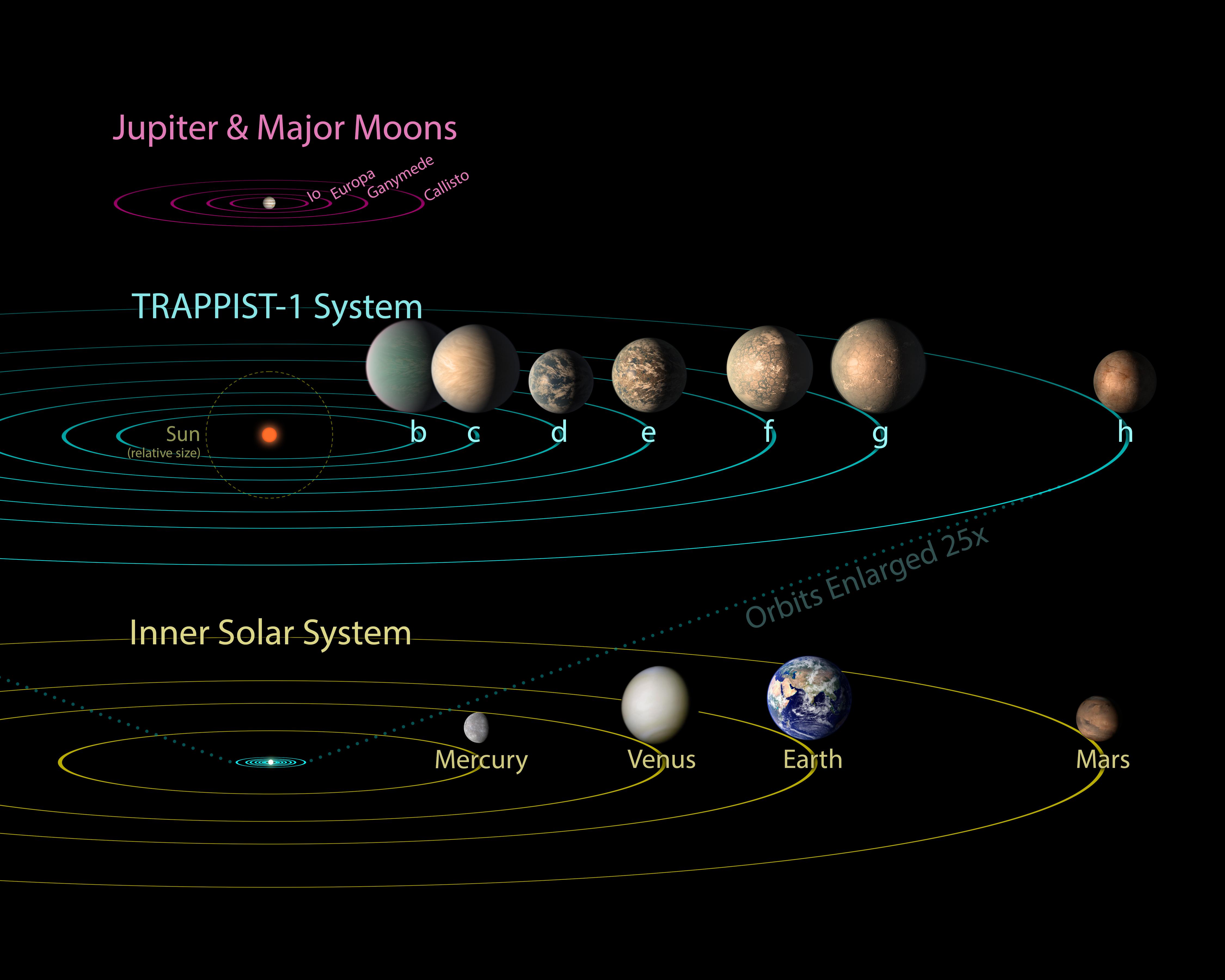The frequently changing tale of the quest for life in the most studied planetary system beyond our own has had another twist, this one in an encouraging direction. Taking into account previously neglected factors, new research rejects the theory planets like TRAPPIST-1 e were once so hot their crusts turned into magma oceans and vented all their water into space. The study, if it stands up to further investigation, would overcome one objection to the possibility of life warmed by the galaxy’s most common class of stars.
Arguably the largest question in the search for life beyond our Solar System is whether there’s any point looking at these common M-type stars, known as red dwarfs. This category makes up three-quarters of the galaxy’s sources of light. It’s an even larger share once you exclude the massive stars with life spans too short to allow life to develop, and also includes most of the stars close enough for us to really study.
The TRAPPIST-1 system – seven rocky planets orbiting an M-type star just 40 light-years away – is ground zero for this debate, with three planets in the zone where temperatures are currently suitable for life to survive.
The key to understanding the TRAPPIST-1 is remembering the system is closer in size to Jupiter’s moons than the Solar System.
Image Credit: NASA-JPL/Caltech
Unfortunately, objections have been raised arguing that any planets in the “habitable zones” of red dwarfs would long ago have lost their atmospheres, making them not habitable after all. If so, we’re probably wasting our time investigating these systems for signs of life and need to focus our energies on the few F, G, and K-type stars we can see well.
The problem is not just that many red dwarfs are flare-y stars whose outbursts may have stripped off any atmosphere, but that M-type stars undergo a hotter stage early in their development. This, combined with runaway greenhouse effects from water in the planets’ atmospheres, would have turned the entire crust molten, causing any water trapped in rocks to escape. If this stage lasted long enough, as most things do with such slow-changing stars, all the water in the atmosphere would escape to space. Under such conditions, there would be no prospect for volcanic restoration of the planets’ atmospheres once the star cooled sufficiently to allow them to survive.
A new model of the atmospheres of planets in the TRAPPIST-1 system rejects the theory they would ever have gotten this hot. Previous modeling had, for simplicity’s sake, treated the atmospheres of the TRAPPIST-1 planets during their star’s hottest phase as purely convective.
Not everyone has given up on the TRAPPIST-1 system as having water, and therefore the potential for life. NASA even made travel posters.
Image Credit: NASA-JPL/Caltech
This isn’t true, a team led by Dr Frank Selsis of the University of Bordeaux, notes. Instead, both convection and radiation processes would have occurred within the planetary atmospheres. Taking these factors into account, the planets would still have reached temperatures incompatible with life at the time. However, they would not have got so hot as to strip themselves of water trapped within rocks. Consequently, once things cooled down, volcanoes could have vented some of the surviving water into the atmosphere to fall as rain and create oceans.
It’s just possible that from there, life would find a way. We already know that TRAPPIST-1’s innermost planets 1b and 1c lack substantial atmospheres, but have yet to collect enough data on 1d, 1e, and 1f, the ones within the current habitable zone. This study suggests it’s worthwhile maintaining the focus not only on these but on the planets orbiting similar stars.
There’s an irony to this issue because the Sun had the reverse problem. During its early days, it was cooler than it is today, which has made it hard to explain our evidence of a Mars where water flowed at the time. Nevertheless, convection-only models had suggested a period where Venus was so hot it similarly shed all its water, but this study questions that.
The study is published in Nature.
Source Link: We May Not Be Ruling Out Finding Life Around TRAPPIST-1 After All
